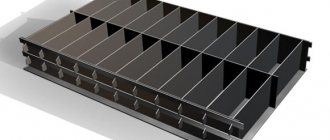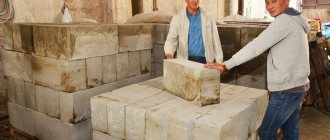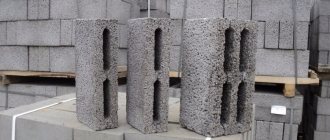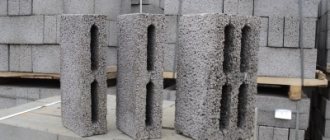A foam generator for foam concrete is needed to foam ordinary concrete and thereby change its structure and improve thermal insulation properties, reduce density and weight.
The modified material can be used to make building blocks of different configurations or fill structures using formwork.
Design Features
It is no secret that manufactured foam concrete of various categories is widely used in modern construction. The popularity of these building materials is quite logical, since they have a wide range of advantages, which almost does not affect their price. To understand the design features of a self-made foam generator for foam blocks, you need to thoroughly study the main components and parameters of the building material that you want to obtain as a result. In this case, foam concrete is considered, which is made from the following set of main components:
- cement;
- foaming composition;
- water;
- sand.
It must be emphasized that independent production of foam blocks is a justified process in material terms.
The cost of this building material is much lower than that of its analogues, which are presented on the building materials market. This is due to the fact that the technology for producing industrial analogues of foam concrete is much more complex.
If we touch on the material aspect, the largest costs are noted only during the purchase of cement. The remaining components in total do not exceed the cost of the required volume of concrete.
Which is the best foam generator for household use?
It is impossible to give a definite answer to the question of which foam generator is the best. All models have their advantages and disadvantages. For example, if you need a portable foam generator for your car, then you should pay attention to budget models. If you need a foam generator for a car wash, or you want to get better, more detailed cleaning, then it is better to choose a mid-budget device or a premium device. For your convenience, we have placed all the models discussed in this article in one comparative table:
| Name | Weight, kg.) | Tank volume (l.) | Cost, rub.) |
| 0,71 | 2 | 1.000 – 1.100 |
| 0,3 | 0,5 | 1.200 – 1.400 |
| 3,6 | 13 | 1.500 – 1.600 |
| 0,71 | 2 | 1.800 – 2.000 |
| 2,61 | 6 | 2.500 – 3.200 |
| 5 | — | 5.200 – 5.600 |
| 10 | 50 | 8.800 – 9.000 |
| 15 | 25 | 16.000 – 18.000 |
| 27 | 50 | 22.000 – 24.000 |
| 36 | 100 | 26.000 – 29.000 |
| 24 | 50 | 32.000 – 34.000 |
| 56 | 150 | 39.000 – 42.000 |
| 25 | 50 | 92.000 – 95.000 |
Video - Review of 3 types of foam kits
Operating principle of the equipment
To date, engineers have tried to create the simplest and most accessible drawings of a foam generator for foam concrete with their own hands. To produce reliable and high-quality equipment, it is necessary to understand the principle by which this device works. Using this equipment, foam is produced, which forms the basis of foam concrete. An industrial device traditionally has three different modules that ensure smooth operation of the entire structure and the performance of its main function, namely:
- a control element with which you can ensure automatic dosing of the product;
- modules that produce foam and also transport it. With their help, it is possible to obtain foam.
The foam generator contains a pre-prepared cement mortar, which, under the influence of a given pressure, mixes with air and is converted into foam concrete.
As practice has shown, this device is not only inexpensive, but also productive. Thus, it is quite possible to make a foaming agent for foam concrete with your own hands, which is capable of producing approximately 500 liters of material in one minute.
Voting for the best foam generator for household use
Which foam generator would you choose or recommend?
Meclube 1517
0.00 % ( 0 )
TORNADO SCO/150C
0.00 % ( 0 )
1940/50 APAC
0.00 % ( 0 )
Portotecnica SCO 100
0.00 % ( 0 )
Idrobase Karcher 9.605-731.0
0.00 % ( 0 )
HAWK LT-25 Foamer
0.00 % ( 0 )
ARMADA AA-350A
33.33 % ( 1 )
Patriot GT320 Imperial
0.00 % ( 0 )
VENUS HD ACIDLINE
0.00 % ( 0 )
KWAZAR VENUS PRO+
33.33 % ( 1 )
MONSOON M-4
0.00 % ( 0 )
DAW 10 DAEWOO
33.33 % ( 1 )
Varieties and popular units
The construction market offers several types of foam generators: reversible (cyclic) and non-reversible (continuous).
The latest type of foam generators for the production of foam concrete allows the operator to ensure regular transportation of the manufactured foam composition to the foam concrete mixer. Unlike this type, the operator of reversible equipment must independently, before any new start-up, add a foaming compound to the receiver and perform a large number of manipulations with the air supply and supply valves. Foam-generating models of a non-reversible type make it possible to reduce both the costs of the required components that are used in the process and working time.
Today, the majority of both foreign and Russian manufacturers offer various devices for generating foam. Among domestic manufacturers, it is necessary to highlight Fomm-PGM and Sunny-PG 150, which are represented by the company from St. Petersburg Stroy-Beton, VM-PG6000, which is offered by Kirov LLC Construction Technologies, as well as PG-AV equipment , made from Perm.
We need to dwell in more detail on Fomm-PGM, since this equipment is known both in our country and abroad.
The equipment performed excellently during operation. Automated, reliable, working with any type of foaming agent and easily adjustable, the unit produces five hundred liters of foam per minute. Like many non-reversible models, Fomm-PGM consists of the following modules:
- dosing digital automatic module, through which you can produce the required volume of foam composition of a predetermined quality, by pressing only one key - “Start”. This makes it possible to avoid the influence of the human factor on the quality composition of the foam;
- a converting module, where a foam mixture is obtained using a tube;
- a composition supply module, which itself supplies a foam concentrate solution made by the operator from any tank. Due to the installed module, the device is semi-automatic.
The production of foam concrete using the Fomm-PGM foam generator is fast and cost-effective. An important advantage is the ability to work simultaneously with a concrete mixer, mortar unit or plastering station.
The weight of the device is 65 kg, and the dimensions are 1350x750x850mm. The density range can be varied from 25 to 250 g/l, and the air pressure is 6 Atm. This equipment consumes only 3 kW/h. One operator is required for maintenance.
Foam concrete production - mixture composition
Building materials are obtained with different strengths depending on the proportions of the components included in the composition:
- Portland cement is needed as a binder.
- Medium and fine sand should consist of ¾ quartz and with less than 3% impurity level.
- For foaming you will need a foaming agent, synthetic or natural.
- Water.
To produce 907 kg of raw foam concrete mixture with a density of 800 kg/m³ you will need:
- 420 kg of sand;
- 320 kg of cement;
- 140 l of water in solution;
- 1.2 kg of foam concentrate.
The composition of the material may vary depending on the purpose. For the first row, you can make stronger and heavier products. Lightweight and less thermally conductive blocks are suitable for the upper rows.
DIY assembly
Before starting to manufacture the device, you must first prepare an assembly diagram for the future unit.
The device diagram includes control valves that set the required density when making foam, as well as shut-off mechanisms that can shut off the entire system when necessary.
You need to put the components of the device on the diagram :
- washer-jet or nozzle;
- mixing chamber;
- foam cartridge;
- foam supply and exit areas.
The mixing chamber is the main component of the device. It will receive a pre-prepared mixture. In the chamber, the composition is thoroughly mixed and, under the influence of a given pressure, flows through a truncated washer-nozzle. During entry into the system, the composition compresses under pressure, and during exit from the device it begins to expand. As the solution expands, its transport speed increases. When leaving the nozzle washer, the cement composition enters the foam cartridge, in which it is converted into a foamy substance.
If the unit needs to be operated temporarily, and its increased productivity is not an important parameter, you can install a Laval nozzle instead of a washer-nozzle.
To assemble the device you will need:
- hoses;
- metal sheets;
- welding machine;
- pipe;
- adjustable and shut-off valves;
- compressor;
- submersible pump.
First you need to assemble a tank, where air and cement mixture will be supplied in the required volume.
Any iron container with a cylindrical shape is perfect for this purpose. To organize a constant supply of solution to the device, it is necessary to install a hose and a pump. A second hose is required to supply compressed air to the structure. Using a special valve, you can regulate the pressure inside the device.
The Laval nozzle is installed separately in the device body. A channel should also be installed in the structure, which will begin to compress and expand in certain areas. The foam cartridge is the final part of the system, but its installation is the most important part in the design. This is explained by the fact that foaming occurs precisely in this place. In order for the foam cartridge to produce foam, it must be filled with ordinary dishwashing items - nets or hedgehogs.
Connecting the mechanism
Step-by-step instruction:
- A cylindrical vessel is placed on a hard surface. The unit must operate without interruption, this will ensure that air and concentrated solution enter the system.
- A container individually filled with liquid with foaming concentrate is placed nearby.
- The pump is immersed in the container with the foam concentrate. A hose built into the foam generator will ensure that the mixture flows into the central compartment of the foam generator.
- To transport compressed air flows into the turbulent chamber, the second tube of the unit is connected to the compressor.
- Adjusting the paired valves will help regulate the pressure force and set the desired foam density parameters. Another pair of valve parts is responsible for the flow of active substances into the tank and the method of shutting off the mass exiting the device.
The principle of a high-quality, self-made unit is the correct mixing of air, water concentrated with a foaming agent and concrete solution. The quality of the produced material depends on these parameters. A well-produced design can provide foam concrete with high strength and performance qualities that are not inferior to its factory counterpart.
Important nuances
There are no ways to manufacture any equipment that would not imply the presence of some nuances. Due to the nature of the construction industry, do-it-yourself assembly of devices for the production of building materials has special specifics. Experts identify the following requirements:
- central hole size - 10 mm;
- a 3:1 ratio is suitable for proportional dimensions of nozzle depth and exit diameter;
- the depth of the nozzle and its inlet diameter should be no more than 30 mm and be in a ratio of 1:1.
To make a foam cartridge, you need to choose a wire mesh rather than a spiral mesh. It is best to give preference to meshes made of stainless steel. They, like a foam exit filter from the device, can be purchased at the store.
The foam cartridge body must be filled with nets, and a brush must be secured at the outlet. You don’t have to use a brush, but in this case you won’t be able to avoid foam splashing at the exit of the nozzle. Manufacturing a foam generator with preliminary preparation will not be very difficult, and the resulting device will serve well for a long time.
Part size ratio
When choosing parts for the mixer, you must adhere to the correct ratio of parts. So, the outer diameter of the ring should be 12-15% larger than the inner diameter of the pipe, because When the spiral is pulled out, the diameter decreases slightly. The inner diameter of the ring should be almost 20% less than the outer diameter of the ring. This size ratio is the most optimal for pipes of different diameters.
Scheme for the production of foam concrete using a mortar mixer.
When assembling the foam concentrate, the rubber bands almost always come into contact with the walls of the mixer barrel. If the friction is too tight, the tape will wrinkle a little. During one full rotation of the shaft, the walls of the barrel are rubbed twice with ribbons from the center to the periphery. However, even if the tape adheres weakly to the wall in these places, the mixture itself will stick and even out the gap. There is no need to beat it off - the excess solution is simply removed from the tape and no accumulations form on the walls. This is due to the fact that the angle of removal of the building mixture from the walls is sharp due to the continuous helical pattern of the blades.











